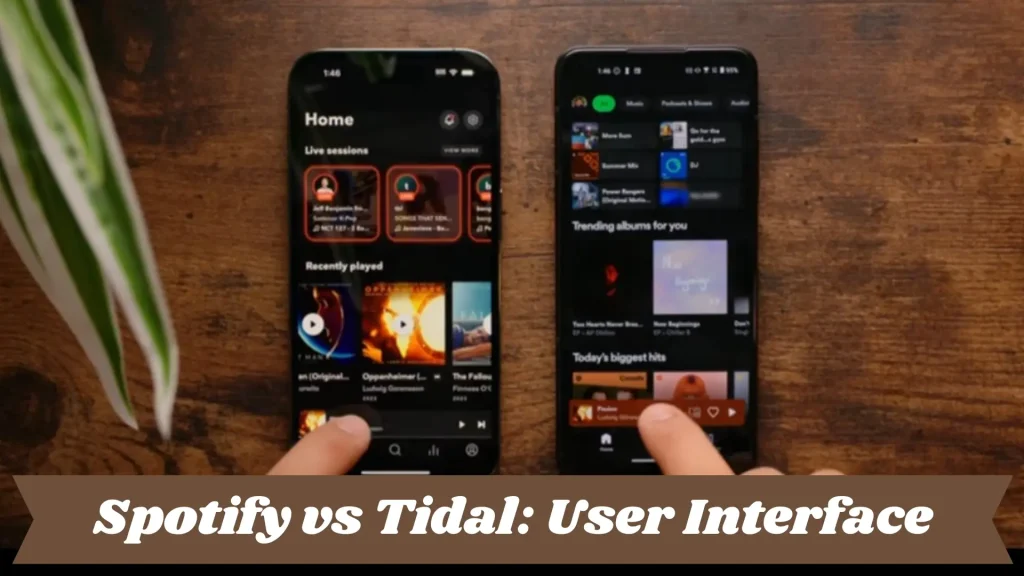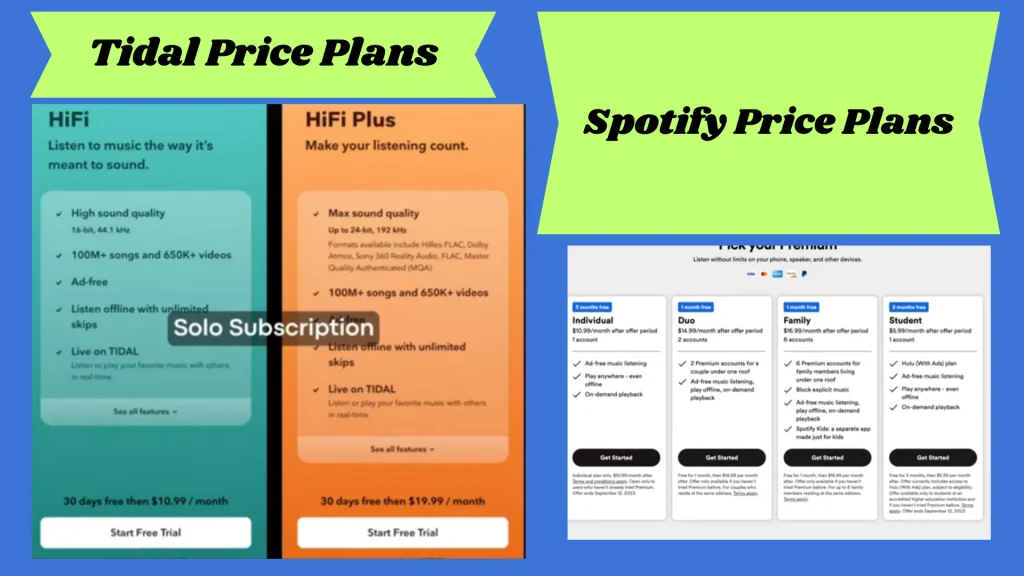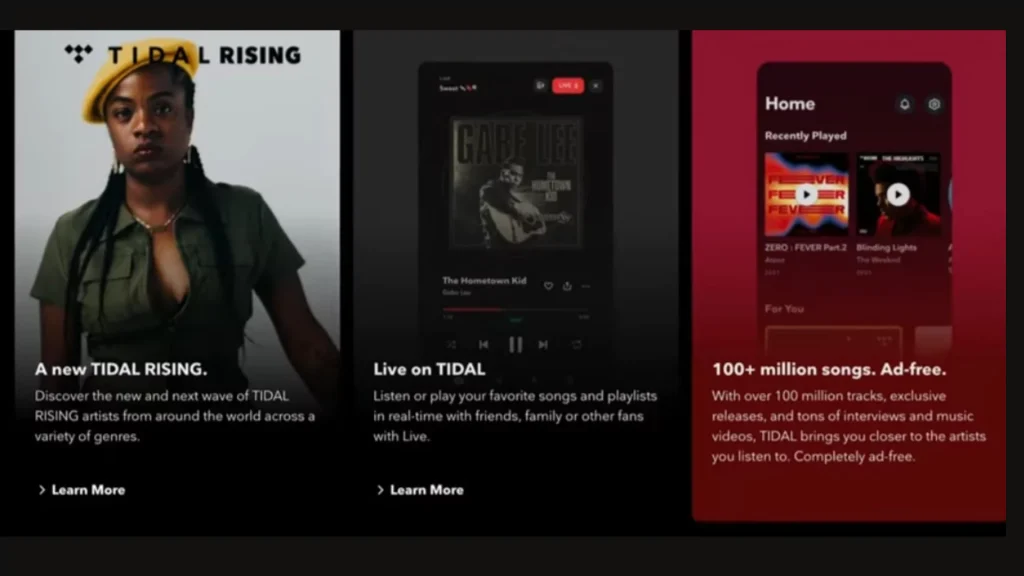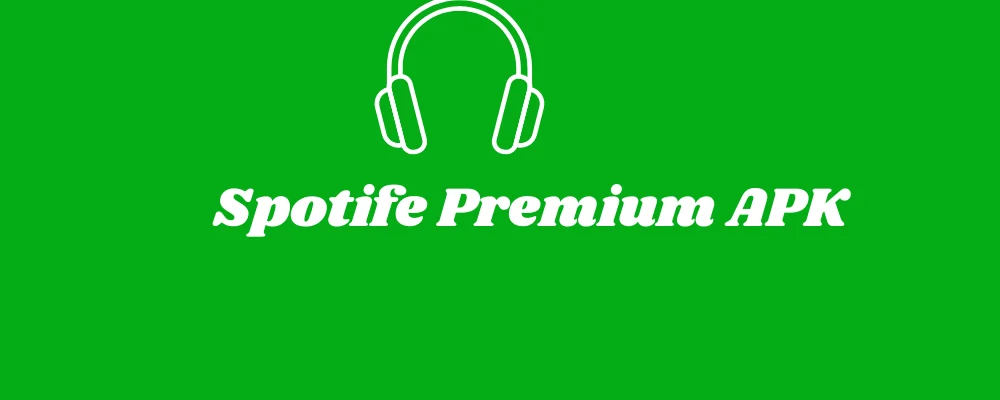Spotify vs Tidal: Which Music Streaming Service is Best?
Spotify and Tidal are two of the most popular music streaming services available today. Both offer extensive music libraries, unique features, and distinct advantages that cater to different audiences. Spotify, launched in 2008, has established itself as the go-to platform for music streaming, with a vast user base and numerous Spotify premium features aimed at enhancing user experience. Tidal, founded in 2014, differentiates itself with high-fidelity sound quality and exclusive content, positioning itself as a premium option for audiophiles and music enthusiasts.
Spotify vs Tidal Overview
| Features | Spotify | Tidal |
| Free Plan | Available | Available in the US |
| Sound Quality | Up to 320 kbps | 1411 kbps (HiFi), 9216 kbps (HiFi Plus) |
| Individual Plan | $10.99 | $10.99 (HiFi), $19.99 (HiFi Plus) |
| Free Trial | 30 Days | 30 Days |
| Offline Listening | Available for Premium Users | Available for Premium Users |
| Availability | 184 Countries | 61 Countries |
| Podcasts | 5 Million | Limited (25) |
| Audiobooks | 350,000+ | Not Available |
| Artist Payout | Approximately $0.0033 Per Stream | Approximately $0.12 Per Stream |
Spotify vs Tidal: In-Depth Comparison
Spotify offers a user-friendly interface, extensive music library, and strong social features, making it a versatile choice for most listeners. Tidal, with its superior sound quality and exclusive content, caters to audiophiles and those seeking a premium listening experience.
Spotify vs Tidal: Music Discovery
Spotify
Spotify excels in music discovery with its powerful algorithms and curated playlists. Features like Discover Weekly, Release Radar, and Daily Mixes help users find new music tailored to their tastes. Spotify’s editorial team also curates genre-specific playlists and personalized recommendations.
Tidal Music
Tidal offers a more curated approach to music discovery. While it has personalized playlists, its strength lies in its human-curated content. Tidal Rising showcases emerging artists, and Tidal X features exclusive live performances and releases. This approach appeals to users who prefer human recommendations over algorithms.
Spotify edges out as the winner due to its powerful algorithms and a wide array of personalized playlists

Spotify vs Tidal: User Interface
Spotify
Spotify’s user interface is known for its simplicity and ease of use. It offers a clean design with intuitive navigation, making it easy for users to explore music, create playlists, and access features. The desktop and mobile apps are well-synced, ensuring a seamless experience across devices.
Tidal Music
Tidal’s interface is sleek and visually appealing, with a focus on high-quality imagery and album art. While it may not be as intuitive as Spotify’s, it offers a rich browsing experience, especially for users interested in high-fidelity audio and exclusive content. Some users might find Tidal’s navigation slightly less straightforward compared to Spotify.
Spotify emerges as the winner due to its simplicity, ease of use, and intuitive navigation.
Spotify vs Tidal: Social Friendly
Spotify
Spotify is highly social-friendly, allowing users to share songs, playlists, and albums with friends directly within the app. It integrates with social media platforms like Facebook and Instagram, enabling users to connect with friends, see what they are listening to, and collaborate on playlists. Spotify’s collaborative playlist feature is particularly popular among users who enjoy sharing music.
Tidal Music
Tidal’s social features are more limited compared to Spotify. While users can share music via social media and create playlists, the platform lacks the extensive social connectivity and collaborative playlist options that Spotify offers. Tidal focuses more on individual user experience rather than social interaction.
Winner is Spotify.

Spotify vs Tidal: Prices and Plans
Spotify
Spotify offers a free tier with ads, along with three premium plans: Individual, Duo (for two users), and Family (for up to six users). The premium plans remove ads, provide offline listening, and offer better sound quality compared to the free tier. Spotify also offers a discounted student plan.
| Plan | Price |
| Free Tier | Free (with ads) |
| Individual | $10.99/month |
| Duo | $14.99/month |
| Family | $16.99/month |
| Student | $5.99/month |
Tidal Music
Tidal does not have a free tier but offers two premium plans: Premium and HiFi. The Premium plan provides standard sound quality, while the HiFi plan offers lossless, high-fidelity sound. Tidal also has Family plans for both tiers and a discounted student plan. While Tidal’s pricing is generally higher than Spotify’s, the HiFi plan’s superior audio quality can justify the cost for audiophiles.
| Plan | Price |
| Premium | $10.99/month |
| HiFi | $19.99/month |
| Family Premium | $16.99/month |
| Family HiFi | $29.99/month |
| Student | $4.99/month (Premium) / $9.99/month (HiFi) |
Spotify is the winner due to its free tier and more affordable premium plans,
Spotify vs Tidal: Content
Spotify
Spotify boasts a massive music library with millions of songs, podcasts, and exclusive content. It continuously updates its catalog with new releases and offers a wide range of genres and artists. Spotify’s investment in podcasting has also expanded its content offerings significantly.
Tidal Music
Tidal‘s library is equally impressive, with a strong focus on high-fidelity audio and exclusive content. Tidal offers unique access to music videos, artist documentaries, and exclusive album releases. Artists like Beyoncé, Jay-Z, and Kanye West have released exclusive content on Tidal, making it a go-to platform for fans of these artists.
Spotify emerges as the winner due to its extensive music library, robust podcast offerings, and continuous updates with a wide variety of genres and artists.
Spotify vs Tidal: Device Support
Spotify
Spotify supports a wide range of devices, including smartphones, tablets, desktop computers, smart speakers, gaming consoles, and car audio systems. Its integration with various platforms and devices ensures that users can access their music seamlessly across different environments.
Tidal Music
Tidal also supports multiple devices, including smartphones, tablets, desktop computers, smart speakers, and some car audio systems. However, its device compatibility is slightly less extensive compared to Spotify. Tidal’s emphasis on high-fidelity audio makes it particularly appealing for users with high-quality audio equipment..
Spotify is the winner due to its extensive support across a wide range of devices and platforms ensures a seamless music listening experience for users in various settings and environments.
Spotify vs Tidal: Audio Quality
Spotify
Spotify offers standard sound quality at 96 kbps on mobile, 160 kbps on desktop and mobile, and 320 kbps for premium users. While this quality is sufficient for most users, it may not satisfy audiophiles seeking the highest fidelity.
Tidal Music
Tidal stands out with its focus on audio quality. The Premium plan offers 320 kbps quality, similar to Spotify’s premium tier. However, Tidal’s HiFi plan provides lossless FLAC files at 1411 kbps, offering an unparalleled listening experience for audiophiles. Tidal also offers Master Quality Authenticated (MQA) tracks, which provide studio-quality sound.
Tidal is the clear winner in sound quality due to its HiFi plan offering lossless FLAC files and MQA tracks.
Spotify vs Tidal: For Artists
Spotify
Spotify provides artists with extensive tools and analytics through Spotify for Artists. This platform allows artists to track their streams, audience demographics, and playlist placements. Spotify also offers promotional opportunities through playlist placements and Spotify Singles.
Tidal Music
Tidal is artist-centric, offering higher payout rates compared to other streaming services. Tidal’s artist-ownership model and focus on fair compensation make it an attractive option for musicians. Tidal Rising and Tidal X initiatives provide emerging artists with exposure and support, fostering a closer relationship between artists and the platform.
Tidal is the winner in artist support and compensation.

Spotify vs Tidal: Additional Features
Spotify
Spotify offers a range of additional features, including podcast integration, collaborative playlists, and the Spotify Wrapped year-in-review feature. Its integration with third-party apps and devices enhances its functionality, making it a versatile platform for various use cases.
Tidal Music
Tidal’s additional features include high-quality music videos, exclusive concert live streams, and artist interviews. Tidal’s focus on providing a comprehensive music and entertainment experience sets it apart from other streaming services. The platform’s commitment to high-fidelity audio and exclusive content makes it a unique offering in the market.
Tidal is the winner because it focuses on high-quality sound, exclusive videos, live concerts, and artist interviews, offering a unique music and entertainment experience.
Conclusion
Choosing between Spotify and Tidal depends on individual preferences and priorities. Spotify excels in music discovery, social features, and device compatibility, making it an excellent choice for users seeking a versatile and user-friendly music streaming service. Its extensive library, podcast integration, and affordable pricing further enhance its appeal.
Tidal, on the other hand, is ideal for audiophiles and music enthusiasts who prioritize high-fidelity audio and exclusive content. Its artist-centric approach, higher payout rates, and unique offerings like Tidal X and Tidal Rising make it a compelling choice for those passionate about music quality and supporting artists.
Ultimately, both Spotify and Tidal offer exceptional music streaming experiences, each with its strengths and unique features. The best choice depends on what aspects of a music streaming service are most important to the individual user.Learn more about Spotif by clicking here.



